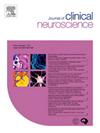Development of a deep neural network model for ultra-early neurological deterioration in ischemic stroke and analysis of associated risk factors
IF 1.9
4区 医学
Q3 CLINICAL NEUROLOGY
引用次数: 0
Abstract
Background
In this study, we established a deep neural network (DNN)-based predictive model, aiming to provide a basis for improving the treatment prognosis of early neurological deterioration (END) in patients with ultra-early ischemic stroke after intravenous thrombolysis with Alteplase.
Methods
A total of 1747 patients with ultra-early ischemic stroke who received intravenous thrombolysis with Alteplase were retrospectively included into the Yidu cloud database. These patients were assigned into the END group (234 cases) and the (No-END) group (1513 cases) based on whether END occurred within 48 h of admission. Tensorflow module in Python software platform was utilized to establish a DNN-based predictive model. Based on the training set (1397 cases) and a testing set (350 cases), the final DNN-based predictive model was generated for the prediction of END-associated factors. The discriminant performance of the model was evaluated by calculating the area under the receiver operating characteristic (ROC) curve (AUC).
Results
The incidence of END in the participants was 13.39 % after intravenous thrombolysis with alteplase. The END group exhibited higher incidences of hemorrhage, all-cause deaths during hospitalization, and poor prognosis versus the No-END group (all p < 0.001). The AUC of DNN model prediction was 0.853, with a sensitivity of 70.53 % and specificity of 100.00 %. The DNN-based predictive model could effectively predict the END-associated factors.
Conclusion
The DNN-based predictive model in this study has a high predicative accuracy, good generalization ability, and robustness, without overfitting. This model is available for the prediction of END in ultra-early ischemic stroke.
缺血性脑卒中超早期神经退化的深度神经网络模型的建立及相关危险因素的分析
本研究建立了基于深度神经网络(DNN)的预测模型,旨在为改善超早期缺血性脑卒中患者静脉溶栓后早期神经功能恶化(END)的治疗预后提供依据。方法回顾性分析1747例接受阿替普酶静脉溶栓治疗的超早期缺血性脑卒中患者,并将其纳入益都云数据库。根据入院后48 h内是否发生END,将患者分为END组(234例)和No-END组(1513例)。利用Python软件平台中的Tensorflow模块建立基于dnn的预测模型。基于训练集(1397例)和测试集(350例),生成最终的基于dnn的预测模型,用于预测end相关因素。通过计算受试者工作特征曲线下面积(AUC)来评价模型的判别性能。结果阿替普酶静脉溶栓后患者的END发生率为13.39%。与No-END组相比,END组在住院期间出血、全因死亡和预后差的发生率更高(p <;0.001)。DNN模型预测的AUC为0.853,敏感性为70.53%,特异性为100.00%。基于dnn的预测模型能够有效预测end相关因素。结论本研究基于dnn的预测模型具有预测精度高、泛化能力好、鲁棒性好、无过拟合的特点。该模型可用于超早期缺血性脑卒中的END预测。
本文章由计算机程序翻译,如有差异,请以英文原文为准。
求助全文
约1分钟内获得全文
求助全文
来源期刊

Journal of Clinical Neuroscience
医学-临床神经学
CiteScore
4.50
自引率
0.00%
发文量
402
审稿时长
40 days
期刊介绍:
This International journal, Journal of Clinical Neuroscience, publishes articles on clinical neurosurgery and neurology and the related neurosciences such as neuro-pathology, neuro-radiology, neuro-ophthalmology and neuro-physiology.
The journal has a broad International perspective, and emphasises the advances occurring in Asia, the Pacific Rim region, Europe and North America. The Journal acts as a focus for publication of major clinical and laboratory research, as well as publishing solicited manuscripts on specific subjects from experts, case reports and other information of interest to clinicians working in the clinical neurosciences.
 求助内容:
求助内容: 应助结果提醒方式:
应助结果提醒方式:


